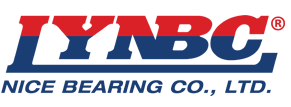.jpg)
Products list
- Slewing Bearings
- High Precision Crossed Roller Bearings
- YRT Precision Rotary Table Bearings
- Full Complement Cylindrical Roller Bearings
- Cylindrical Roller Bearings
- Tapered Roller Bearings
- Thrust Bearings
- Angular Contact Ball Bearings
- Deep Groove Ball Bearings
- Split Bearings
- Track Roller Bearings
- Backing Bearings
- Self-aligning roller bearings
- Thin Section Bearings
Methods to avoid bearing failure
Author: naisiTime: 2023-10-31 14:59:57
Methods to avoid bearing failure
The best way to solve the problem of bearing failure is to avoid failure. This can be achieved by considering key performance characteristics during the selection process. These characteristics include noise, starting and running torques, rigidity, non-repetitive oscillations, and radial and axial clearances.
The torque requirements are determined by the lubricant, the cage, the quality of the bearing ring (the roundness of the curved part and the quality of the surface finish) and the use of sealing or shielding devices. The viscosity of the lubricant must be carefully selected, because inappropriate lubricants can produce excessive torque, especially in small bearings. In addition, the noise characteristics of different lubricants are also different. For example, grease produces more noise than lubricating oil. Therefore, lubricants should be selected according to different uses.
During the bearing rotation process, if there is a random eccentric toe between the inner ring and the outer ring, a non-repetitive oscillation (NRR) very similar to the CAM motion will be generated. The size error of the cage and the eccentricity of the bearing ring and the ball can cause NRR. Unlike repetitive oscillations, there is no way for the NRR to compensate.
In the industry, different types and precision grades of bearings are generally selected according to the specific application. For example, when the minimum oscillation is required, the non-repetitive oscillation of the bearing cannot exceed 0.3 microns. Similarly, the machine spindle can only allow minimum oscillations to ensure cutting accuracy. Therefore, bearings with small non-repetitive oscillations should be used in the application of machine tools.
In many industrial products, pollution is inevitable, so sealing or shielding devices are commonly used to protect bearings from dust or dirt. However, due to the movement of the inner and outer rings of the bearing, the sealing of the bearing is impossible to reach a perfect degree, so the leakage and pollution of the lubricating oil is always an unsolved problem.
Once the bearing is contaminated, the lubricant will deteriorate, and the running noise will also become larger. If the bearing overheats, it will jam. When the pollutant is between the ball and the bearing ring, its effect is the same as the abrasive particles between the metal surface, which will cause the bearing to lose value. One way to control pollution is to use sealing and shielding devices to keep away dirt.
Once the bearing is contaminated, the lubricant will deteriorate, and the running noise will also become larger. If the bearing overheats, it will jam. When the pollutant is between the ball and the bearing ring, its effect is the same as the abrasive particles between the metal surface, which will cause the bearing to lose value. One way to control pollution is to use sealing and shielding devices to keep away dirt.
Previous Article:The first choice for precision instruments——Thin section bearings
Next Article:Build Customer Relationships
Contact Us
Luoyang Nice Bearing Co.,Ltd.
- Lianmeng Road, Jianxi district, Luoyang City,Henan province.
- sales@lynicebearing.com
- techsupport@lynicebearing.com
- +86-0379-60689957
- +86-0379-60689929
- Nettie.Ma
Leave a Message
Please leave a message,and we will immediately answer your questions.
Copyright © 2015 Luoyang Nice Bearing Co.,Ltd. All rights Reserved. Privacy Policy Powered by MetInfo






